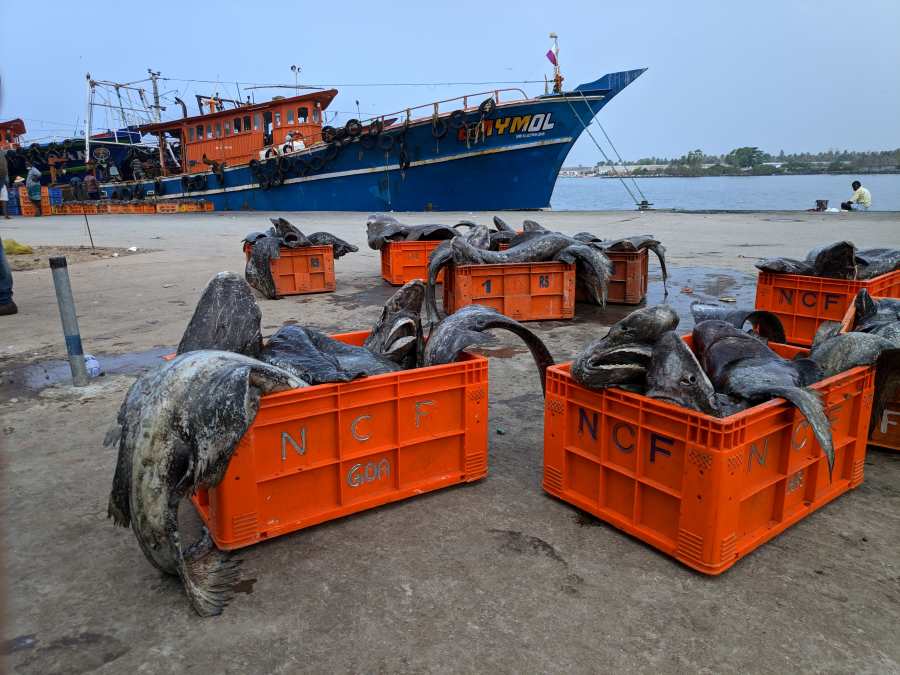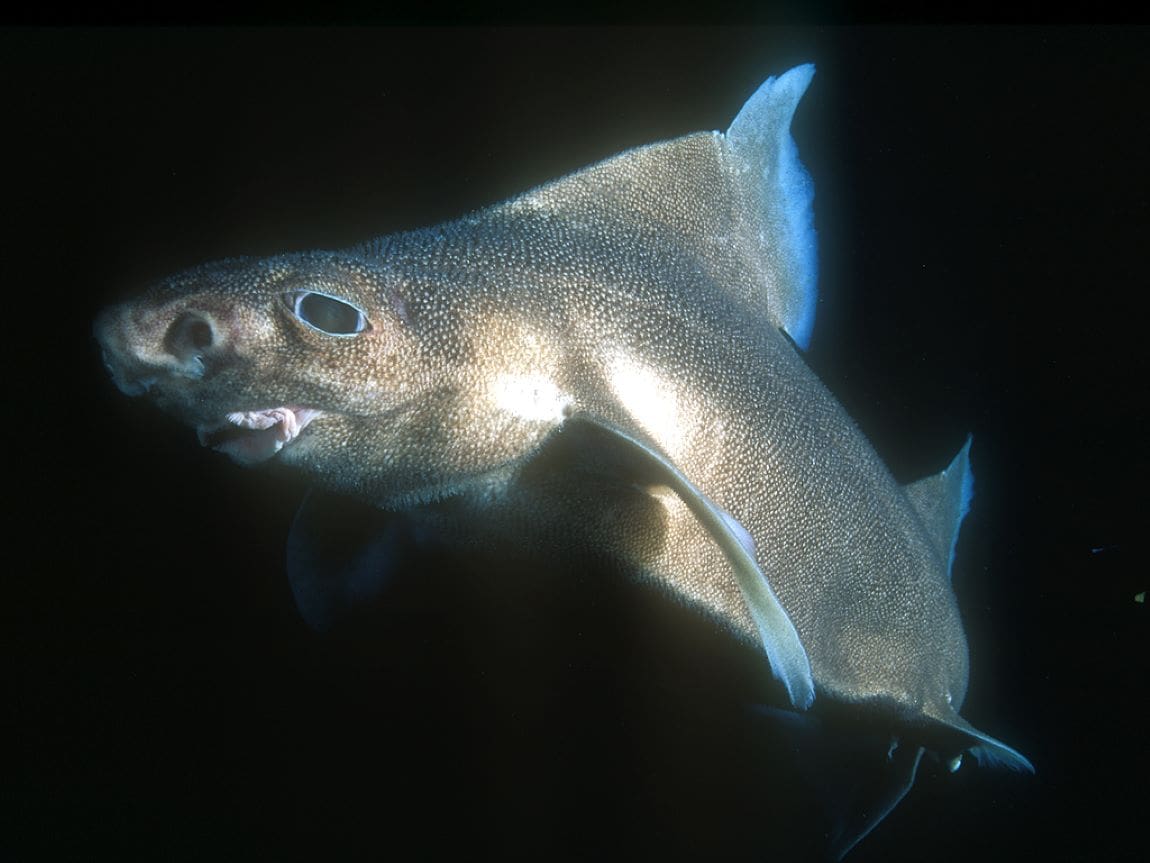The world’s oceans are losing their apex predators at an alarming rate. A new study published in Science reveals that overfishing has reduced populations of sharks, rays, and chimaeras by more than 50% since 1970.
Using a newly developed aquatic Red List Index (RLI), researchers determined that the extinction risk for these species has surged by 19% in five decades. This loss not only endangers the survival of these ancient creatures but also threatens to disrupt vital ecological functions, underscoring the urgent need for stronger conservation measures.
Simon Fraser University – To determine the consequences, a team of researchers developed an aquatic Red List Index (RLI) which shows that the risk of extinction for chondrichthyan has increased by 19 per cent. The study also highlights that the overfishing of the largest species in nearshore and pelagic habitats could eliminate up to 22 per cent of ecological functions.
Chondrichthyans are an ancient and ecologically diverse group of over 1,199 fishes that are increasingly threatened by human activities. Overexploitation by target fisheries and incidental capture (bycatch), compounded by habitat degradation, climate change and pollution, has resulted in over one-third of chondrichthyans facing extinction. Here, the RLI was used to track the status of these species over the past 50-years.

“The shark and ray RLI shows how declines first occurred in rivers, estuaries, and nearshore coastal waters before spreading across the oceans and then down into the deep sea,” said Professor Nicholas K. Dulvy at Simon Fraser University. “The sequential depletion of the largest and most functionally important species – such as sawfishes and rhino rays – was followed by the decline of large stingrays, eagle rays, angel sharks, hammerheads and requiem sharks. Eventually, fisheries turned to deepwater sharks and skates for the liver oil and meat trade.”
These widespread documented declines are expected to have significant consequences on other species and aquatic ecosystems.
“Sharks and rays are important predators, and their decline disrupts food webs throughout the Ocean. Larger wide-ranging species connect ecosystems, for example, reef sharks are vital in transferring nutrients from deeper waters to coral reefs, helping to sustain those ecosystems,” said Dr. Nathan Pacoureau at the European Institute for Marine Studies, Brest University, France. “Rays, meanwhile, are important foraging animals that mix and oxygenate sediments, influencing marine productivity and carbon storage.”
Despite these alarming trends, the team emphasizes the positive development in the appreciation and conservation of sharks and rays.
“This analysis points to solutions” said Professor Colin Simpfendorfer, James Cook University, Australia. “Nations can reduce the extinction risk by lowering fishing pressure to sustainable levels, strengthening fisheries governance, and eliminating harmful subsidies. Progress has already created bright spots of hope for chondrichthyans, including in Australia, Canada, New Zealand, United States, and parts of Europe and South Africa”
“The Red List Index has been a tool used by governments for monitoring conservation progress on land, yet no equivalent existed for the Ocean.” said Dr Rima Jabado, Deputy Chair of the IUCN Species Survival Commission (SSC) and Chair of the IUCN SSC Shark Specialist Group. “This new shark and ray RLI will help track progress toward ocean biodiversity and sustainability targets, identify the species and places most at risk and guide future conservation efforts”.
The study was completed as part of the Global Shark Trends Project (GSTP), a collaboration of the IUCN Species Survival Commission Shark Specialist Group, Simon Fraser University, James Cook University, and the Georgia Aquarium established with support from the Shark Conservation Fund to assess the extinction risk for chondrichthyan fishes (sharks, rays, and chimaeras).
The analysis is based upon the first global reassessment of IUCN Red List Status published in 2021. The team engaged 322 experts through 17 workshops from around the world to complete the 8-year long reassessment.
The RLI shows trends in overall extinction risk for species, and is used by governments to track their progress towards targets for reducing biodiversity loss. Up to now, the RLI is available for five taxonomic groups only (those in which all species have been assessed at least twice): birds, mammals, amphibians, cycads and warm-water reef-forming corals.
The RLI can be disaggregated in various ways: thematic RLIs show trends for subsets of species of particular policy relevance. The RLI can be calculated for individual countries and regions, with each species contributing to the index weighted by the proportion of its global range within the country or region.
Class Chondrichthyes comprises three main lineages: sharks, and rays, and chimaeras (a relatively small group of mainly deepwater species). Chondrichthyans makeup the oldest and largest evolutionary radiation of vertebrates and one of the three taxonomic Classes of fishes. Here we consider 1,199 species from the comprehensive global reassessment, which is the most accurate assessment of the decade.
Starting in the 1990s, the conservation of sharks and rays has been increasingly considered within Regional Fisheries Bodies (including Regional Fisheries Management Organizations) and international wildlife treaties, particularly the Convention on International Trade in Endangered Species of Wild Flora and Fauna (CITES).
Through various associated actions aimed primarily at ending overexploitation of threatened species, member governments are required to restrict fishing and/or exports to sustainable levels, but the record for fulfilling these commitments has to date been generally poor. To date, deepwater sharks and rays have largely been ignored from these efforts.
Journal Reference:
Brittany Finucci, Nathan Pacoureau, Cassandra L. Rigby, Jay H. Matsushiba, Nina Faure-Beaulieu, C. Samantha Sherman, Wade J. VanderWright, Rima W. Jabado, Patricia Charvet, Paola A. Mejía-Falla, Andrés F. Navia, Danielle H. Derrick, Peter M. Kyne, Riley A. Pollom, Rachel H. L. Walls, Katelyn B. Herman, Bineesh Kinattumkara, Charles F. Cotton, Juan-Martín Cuevas, Ross K. Daley, Dharmadi, David A. Ebert, Daniel Fernando, Stela M. C. Fernando, Malcolm P. Francis, Charlie Huveneers, Hajime Ishihara, David W. Kulka, Robin W. Leslie, Francis Neat, Alexei M. Orlov, Getulio Rincon, Glenn J. Sant, Igor V. Volvenko, Terence I. Walker, Colin A. Simpfendorfer, Nicholas K. Dulvy, ‘Fishing for oil and meat drives irreversible defaunation of deepwater sharks and rays’, Science 383, 1135-1141 (2024). DOI: 10.1126/science.ade9121
Article Source:
Press Release/Material by Simon Fraser University
Featured image: The deepwater shark, Prickly Dogfish (Oxynotus bruniensis). Credit: Ken Hoppen




